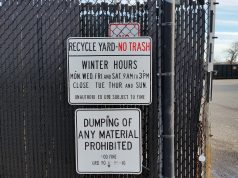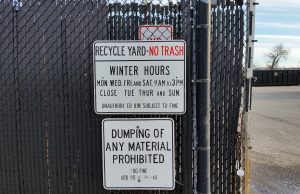In a world where compassion for our fellow creatures is a testament to our humanity, Eryk Stefaniak envisions a brighter, more benevolent future for animals. With a passion for animal welfare, Eryk Stefaniak has emerged as a driving force behind transformative initiatives that are reshaping the lives of animals in his local area. In this article, Eryk Stefaniak advocates for change, and explores the profound impact of dedicating time to the landscape of global animal welfare.
Not everyone has the time to devote to being an animal rights activist, but most people agree that laws against pet abuse and harming local wildlife are important to a community’s wellbeing. Is the same true on a larger scale? How might protecting animal welfare in the global economy benefit the international community?
Since animals play a direct role in sustaining the planet and all human activities, their welfare is closely intertwined with our own. Working to ensure animals’ health and safety, minimizing disruption to their habitats, and reducing our reliance on animal products can benefit human health, fight climate change, and strengthen global and local economies.
Below, Eryk Stefaniak explains why animal welfare deserves international attention and how protecting animals can have a positive ripple effect on everything from climate change to commerce and far beyond.
Eryk Stefaniak Discusses Current Trends Threatening Animal Welfare
Although humans and animals share the same home, there’s a clear inequality in the power dynamic. While humans over-consume animal products and co-opt natural ecosystems in search of fuel, farmland and other resources, animals bear an unfair share of the consequences.
Eryk Stefaniak says that it’s becoming increasingly clear, however, that this cycle can’t continue forever. With climate change impacting human economies and threatening communities around the world, the need to change our habits has never been more urgent.
In 2015, the UN Sustainable Development Goals Summit issued 17 goals designed to increase international collaboration on sustainability. Two of these goals, particularly numbers 14 and 15, acknowledged the need to take better care of animal populations on land and in the world’s oceans.
Some of the main intentions set for completion by 2030 included ending harmful practices such as:
- Deforestation
- Overfishing
- Water acidification
- Illegal animal trafficking
- Illegal poaching
While there has since been a slight decrease in illegal fishing, oxygen depletion and water acidification continue to harm ocean wildlife. As for life on land, the situation has shown almost no improvement, as unsustainable deforestation and high extinction rates continue taking a toll on biodiversity.
Eryk Stefaniak says that in addition to fueling ecological crises, neglecting animal welfare also contributes to global inequality. Developing countries often have economies highly dependent on sustainable agriculture, which is heavily impacted by climate change and competition from mass-scale crop and livestock farming.
These countries also tend to be among the hardest hit by the natural disasters caused by climate change and the least well-equipped to recover economically.
How Humans Benefit from Protecting Animal Welfare
Eryk Stefaniak reports that the success and sustainability of the human economy, not to mention our physical health and well-being, depend on animals to a far greater extent than most people realize. Below are a few examples of how animals are integral to human activities:
Ecotourism
From ziplining in the jungle to whale watching to African safaris, people often travel to experience and explore nature. Unless we work to protect the wildlife in these areas and sustain their habitats, those who work in tourism and travel or live in communities heavily dependent on tourism are set to suffer the economic consequences of humans’ ecological irresponsibility.
Pest Control
Nature is smart, and the natural elements in each ecosystem interact in a way that, without human intervention, would function sustainably. As animals higher in the food chain die due to overfishing, poaching, illegal trading or the destruction of their homes, the pests they feed on often thrive, which can heavily impact crop production, human health, and regional biodiversity.
Agriculture
Eryk Stefaniak says that from working the field to providing milk and eggs to being consumed as a source of protein, animals form the foundation of agriculture. While there are certainly ways to practice sustainable agriculture, factory farms and other forms of animal cruelty in the agricultural industry wreak havoc on nature and its inhabitants alike.
Current practices may yield higher product numbers and profit margins, but they do so at tremendous ecological cost in the form of high levels of methane production and rising rates of animal extinction.
 Rotational Grazing of Farm Animals
Rotational Grazing of Farm Animals
Rotational grazing in agriculture is a practice that brings forth a multitude of benefits for both humans and animals.
For animals, rotational grazing represents a departure from traditional confined spaces, offering them access to fresh and diverse forage on a rotational basis. As livestock are moved periodically to different feeding areas, the land they graze on has time to regenerate and replenish, ensuring a continuous supply of nutritious and varied vegetation. This translates to healthier and more content animals, as they engage in natural behaviors, receive balanced nutrition, and avoid overgrazing or degradation of pastures.
From a human perspective, rotational grazing reaps rewards in multiple ways. Firstly, it promotes soil health and ecosystem vitality, as the rest periods for grazing areas allow the soil to rebuild its nutrient content and microbial activity. This, in turn, leads to increased fertility, water infiltration, and carbon sequestration, positively impacting overall land sustainability. Moreover, rotational grazing minimizes the need for artificial fertilizers and promotes natural pest control, contributing to environmentally friendly agricultural practices.
In terms of economic benefits, rotational grazing can lead to reduced feed costs, as livestock derive nourishment from the diverse vegetation available in each new paddock. Additionally, the practice has the potential to increase livestock production and quality, enhancing market value and profitability for farmers. Furthermore, by mitigating soil erosion and nutrient runoff, rotational grazing supports long-term farm viability and resiliency against environmental challenges.
Overall, the intertwining advantages of rotational grazing create a virtuous cycle where animals thrive in natural habitats, farmers reap rewards through sustainable practices, and ecosystems flourish under responsible land management. This harmonious interaction underscores the pivotal role of rotational grazing in forging a sustainable future for agriculture, while simultaneously fostering the well-being of both animals and humans.
Climate Regulation
Oceans cover over 70% of the planet and play an important role in regulating Earth’s temperatures and seasons. Overfishing, poaching and ocean pollution are responsible for many of the devastating impacts of climate change, as they tamper with the oceans’ ability to absorb emissions and have also led to rising sea levels and harsher seasonal temperatures.
On land, factory farming is the largest source of the greenhouse gas emissions responsible for rising temperatures. Ensuring the humane treatment of farm animals helps to decrease these harmful emissions while also working against nutrient depletion in the soil used to grow crops.
Disease
Eryk Stefaniak says that improving the life quality of agricultural animals can reduce the rate of disease transmission in animal and human populations alike. In overcrowded factory farm settings, disease spreads much more quickly among animals. As a result, the desire to maximize production output by decreasing the amount of space each animal has backfires as more of the “product” dies of disease and mistreatment.
Recent years have also seen a rise in the number of animal diseases that mutate and infect human populations, as well as diseases carried by animals such as mosquitoes, whose natural predators are diminishing in numbers due to human actions.
Therapy and Guidance
Animals are also important for helping humans on a more personal level. From the bonds built around family pets to emotional support/therapy animals to seeing-eye dogs, well-treated animals often have a natural connection with humans and play a role in improving individuals’ life quality.
 Simple Ways to Support Animal Welfare
Simple Ways to Support Animal Welfare
Eryk Stefaniak mentioned above that not everyone is a full-fledged supporter of animal rights, but everyone can and should support animal welfare. Although these terms are often used interchangeably, they refer to two different sets of beliefs.
Those who support animal rights believe it is inherently wrong to use animals for food, clothing, experiments, entertainment (like in circuses and zoos) and even pet breeding.
The term animal welfare, on the other hand, does not reject the use of animals, but simply states that humans must treat animals humanely by protecting their “Five Freedoms”:
- Freedom from hunger and thirst
- Freedom from physical discomfort
- Freedom from pain, injury, and disease
- Freedom to behave in a way natural to their kind
- Freedom from fear and distress
While everyone who supports animal rights supports animal welfare, not everyone who supports animal welfare fully aligns with the ideas of animal rights.
Despite being the less extreme of the two, animal welfare is nonetheless extremely important. Here are some simple ways to practice and expand animal welfare to improve quality of life in animals:
- Consume less animal protein and opt for in-season and local produce
- Recycle to help prevent plastic buildup in the ocean
- Advocate to end factory farming, overfishing and mass-breeding
- Uphold and enforce laws prohibiting animal abuse
- Adopt pets from an animal shelter instead of a breeder
- Avoid purchasing accessories and furniture that contain animal products, such as fur and leather
- Avoid purchasing cosmetics and other products from companies that use animal experimentation
Conclusion
Eryk Stefaniak reports animal welfare seeks to ensure that animals are treated humanely by having their needs met and the ability to live free from discomfort and abuse. While human industries such as food production, ecological tourism, entertainment, and pet breeding directly impact the lives of animals, our interactions with the natural world can also have consequences for wildlife.
Working toward animal welfare by improving our industrial practices, ecological decisions and relationship with animals can have lasting positive impacts for our economies, international relations, sustainability goals and general health. An investment in animal welfare is an investment in human welfare both today and for years to come.


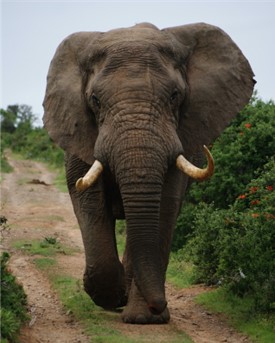
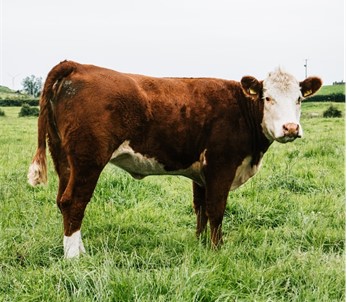 Rotational Grazing of Farm Animals
Rotational Grazing of Farm Animals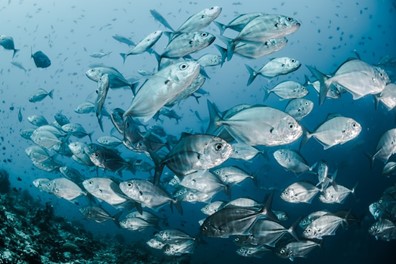 Simple Ways to Support Animal Welfare
Simple Ways to Support Animal Welfare